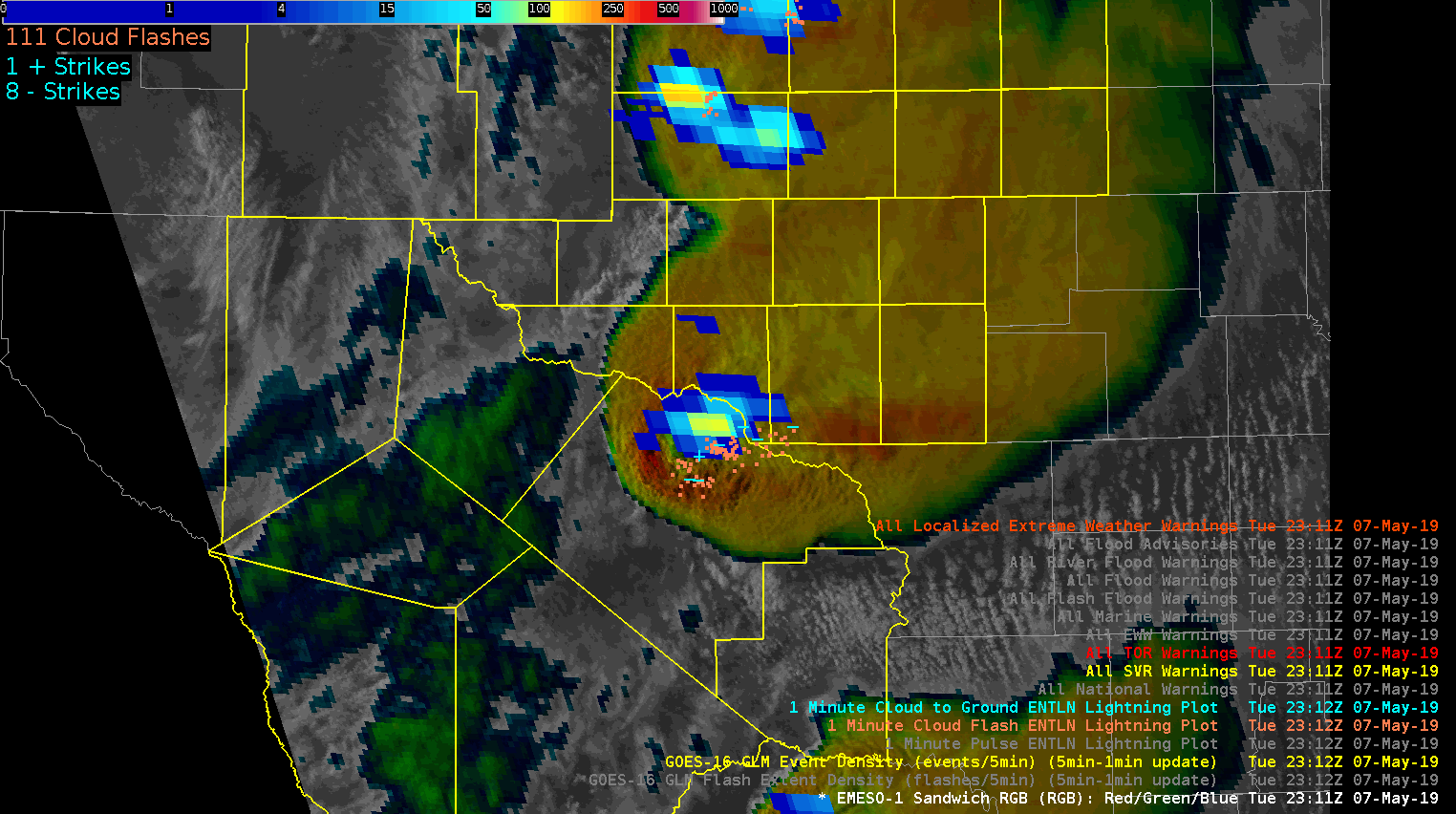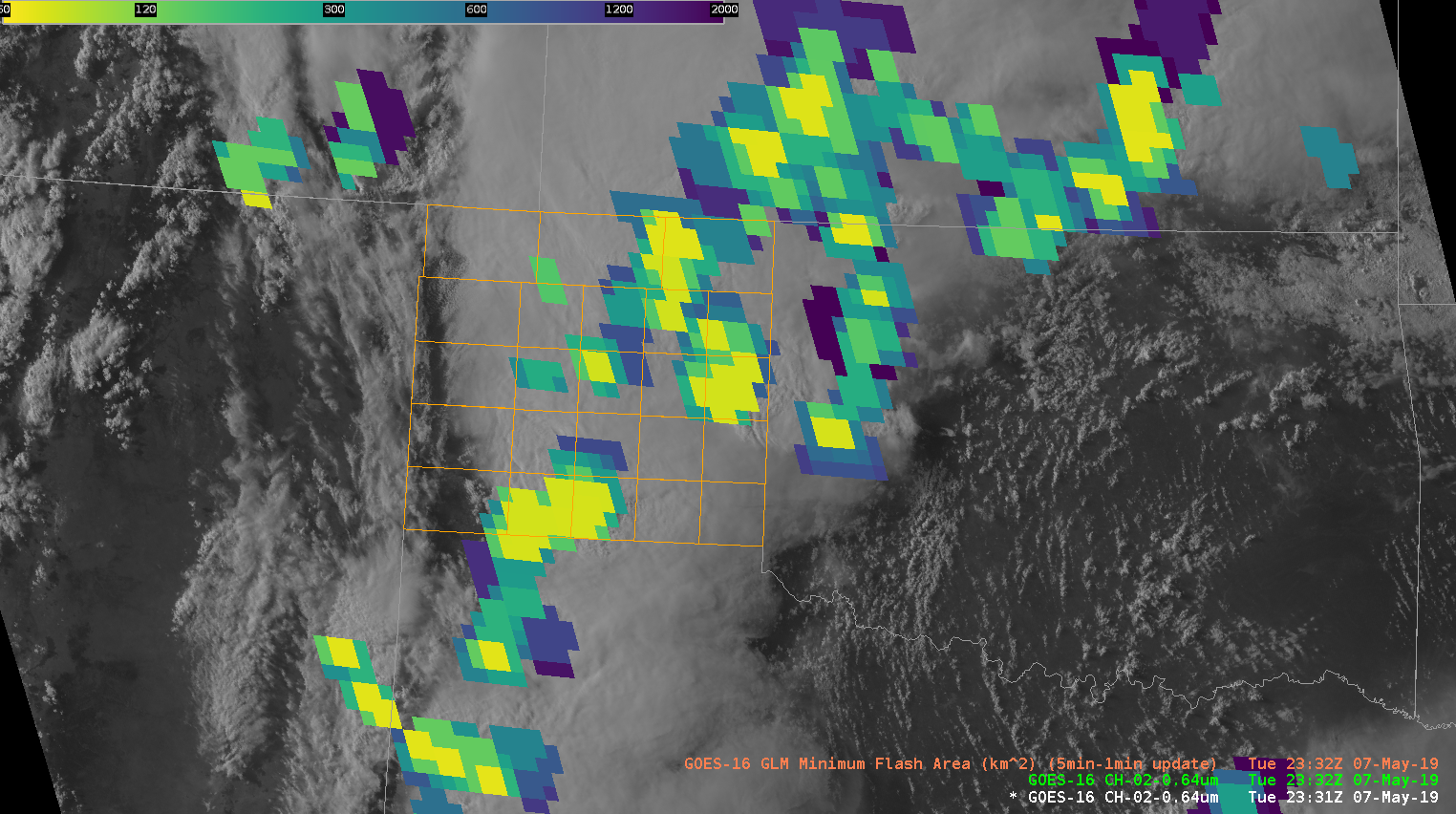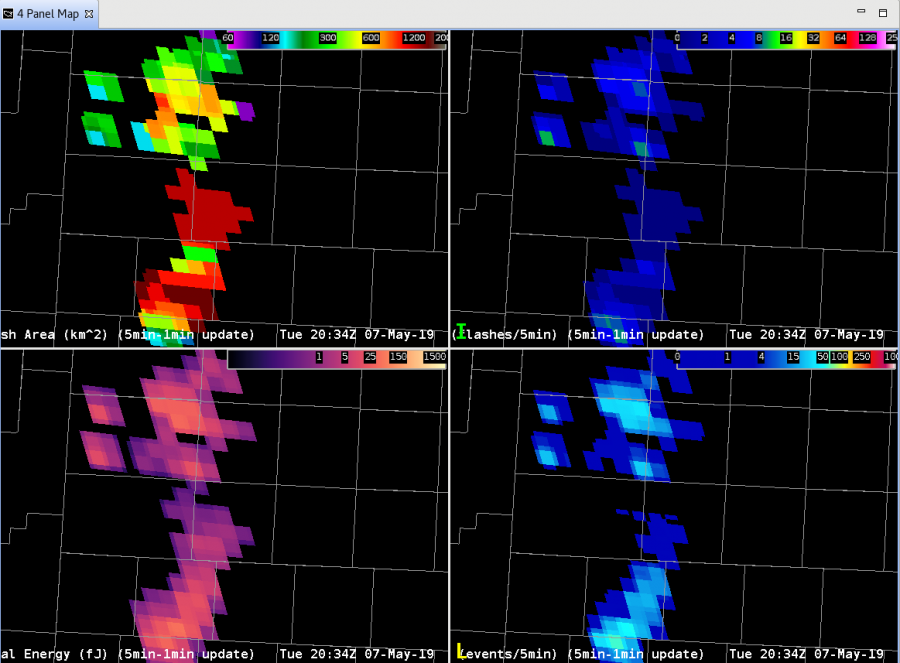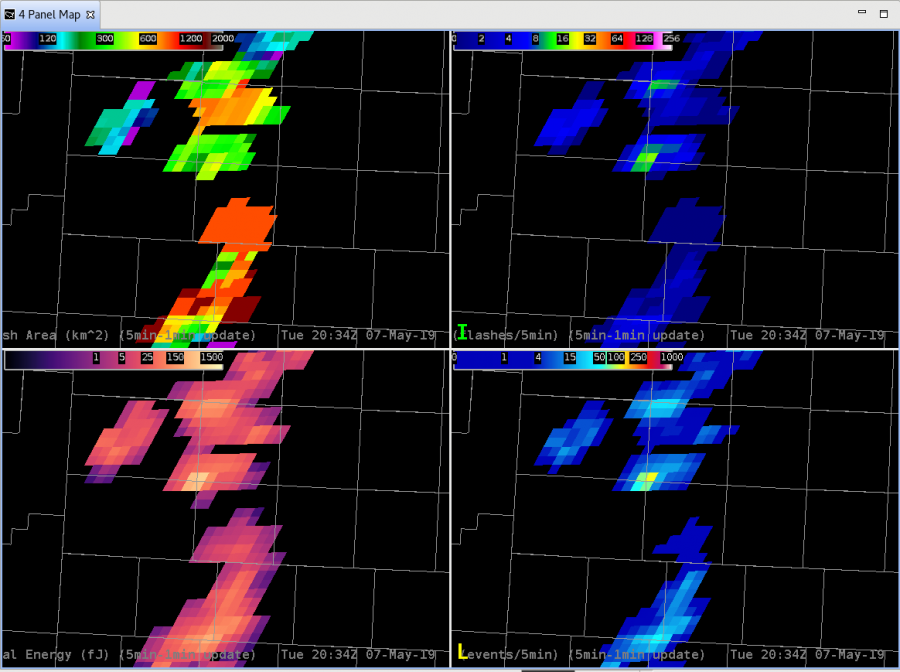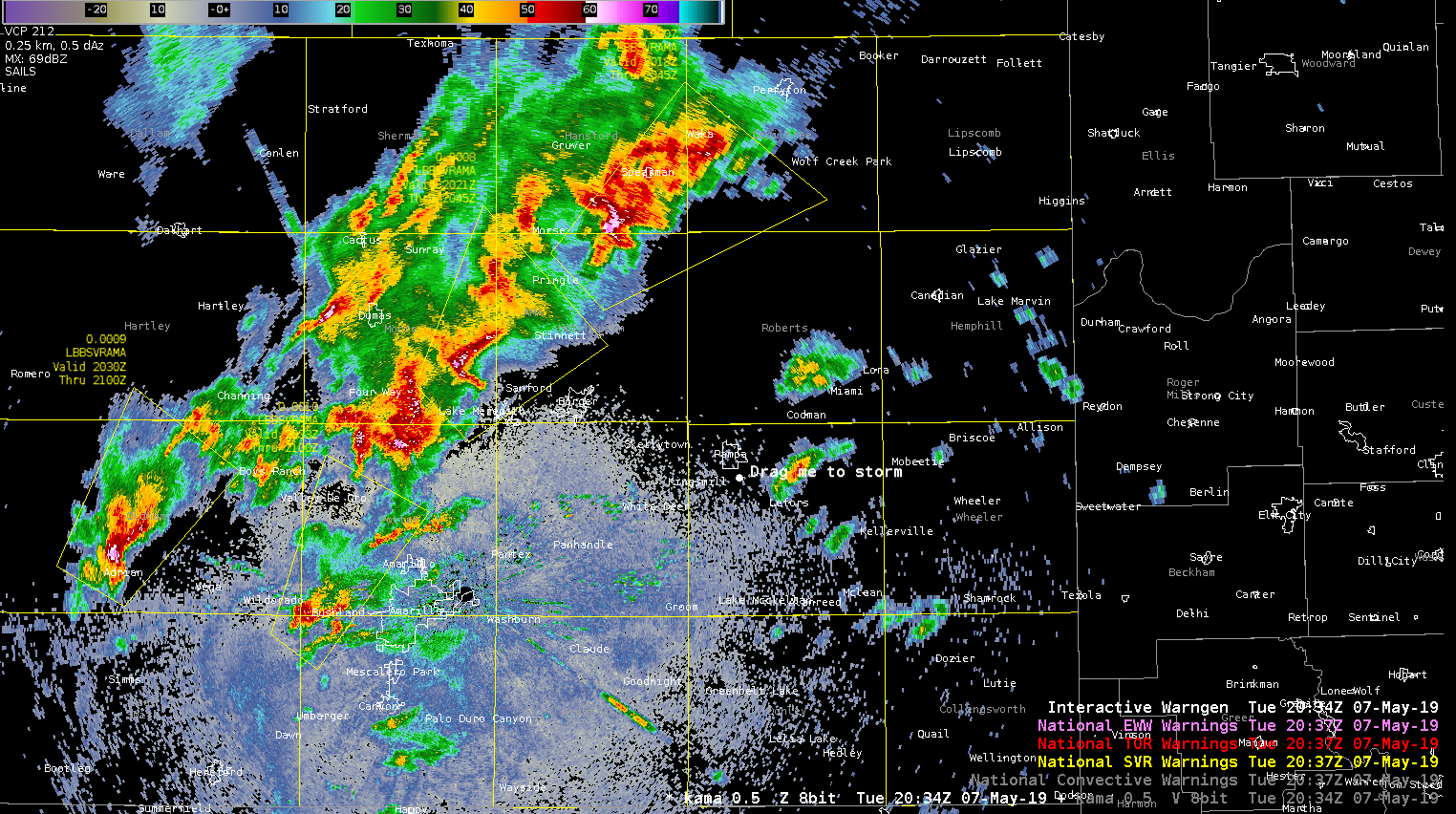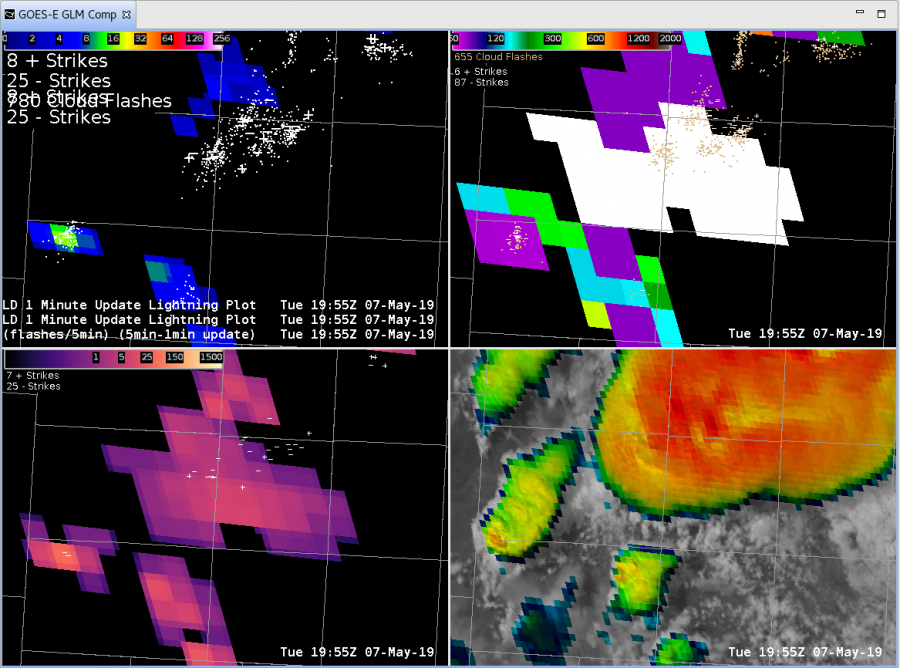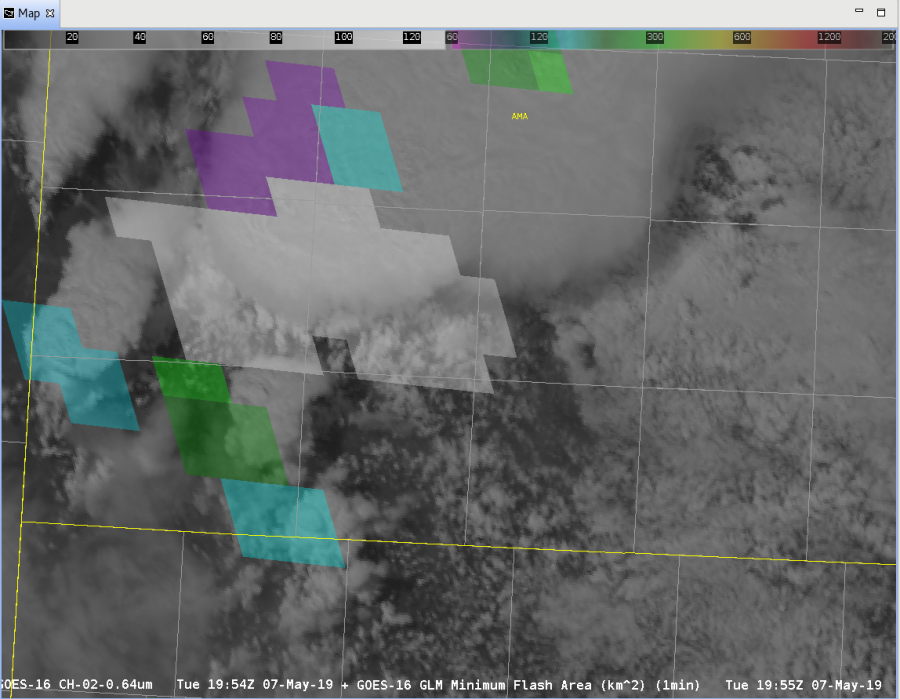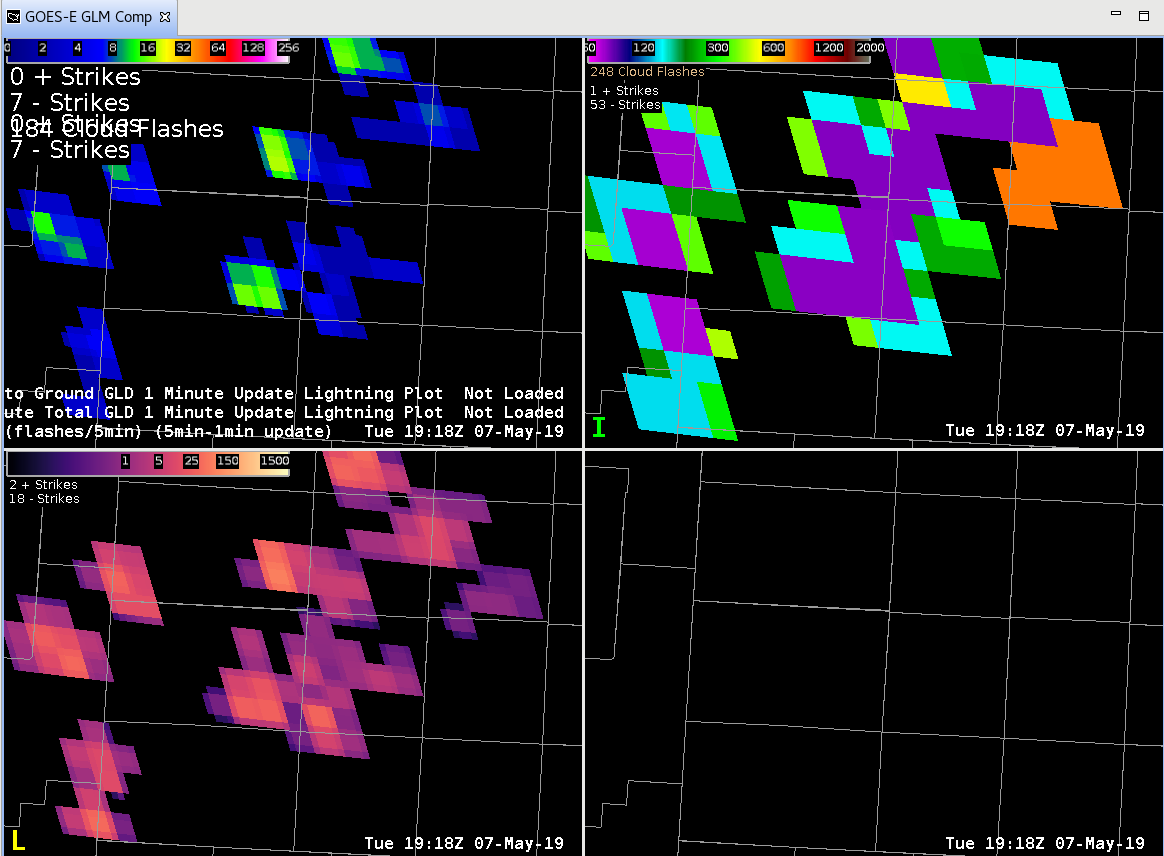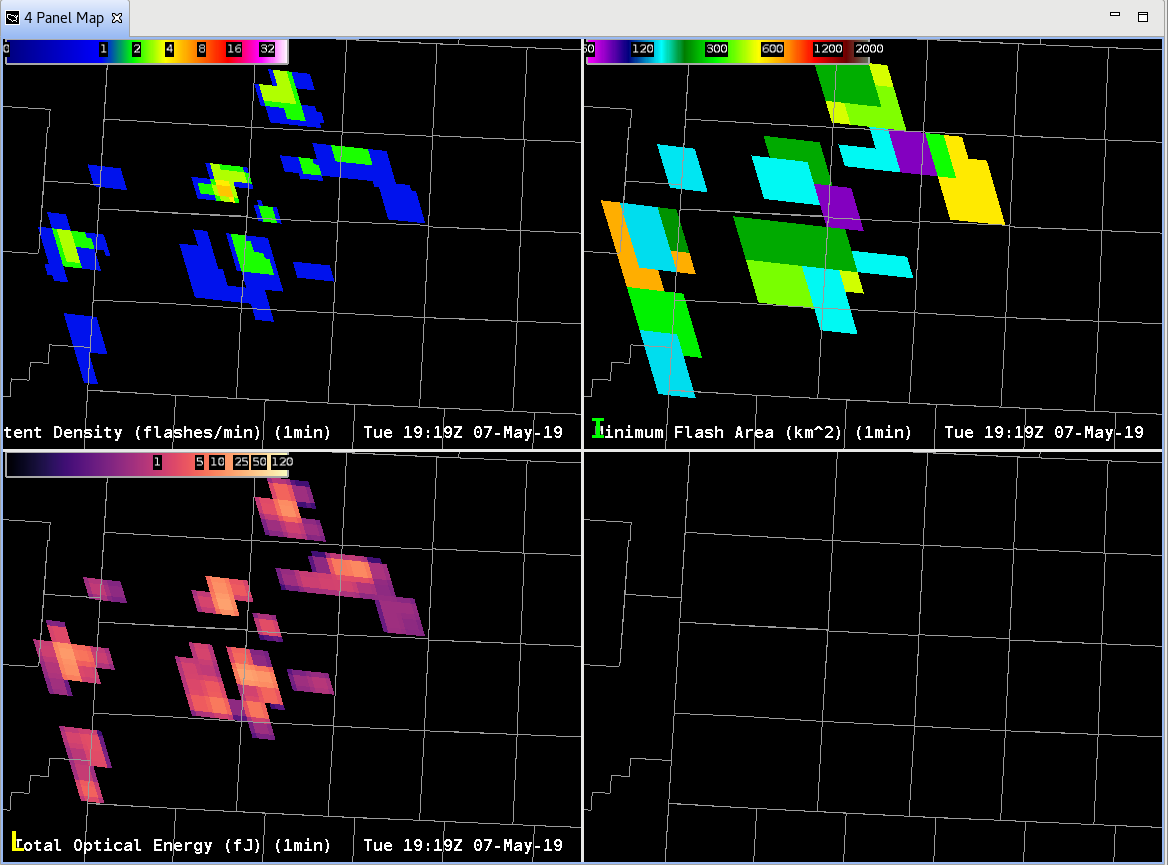At 2330Z, GLM began picking up a signal of increased lightning activity with a storm moving into the LUB CWA. At the time the core was strong with a spike in value in the MRMS VII product, though real-time radar had started to show a weakening storm. (Left panel shows GLM Event Density)

10 minutes later, at 2340 UTC, the storm was deteriorating, yet GLM Event Density continued to increase in this area while ENTLN Total lightning data was decreasing.

After another 10 minutes, at 2350Z, GLM lightning activity continues to breanch eastward despite little reflectivity aloft and ELTLN lightning continuing to decrease in the area.

Finally, at 2352Z, 2 minutes later there’s a rapid decrease in the lightning activity on GLM in the easternmost storm. The Event Density data was the 5min-1min update, and it looked like 1 minutes worth of data was the result of the eastern extension.

#ProtectAndDissipate

